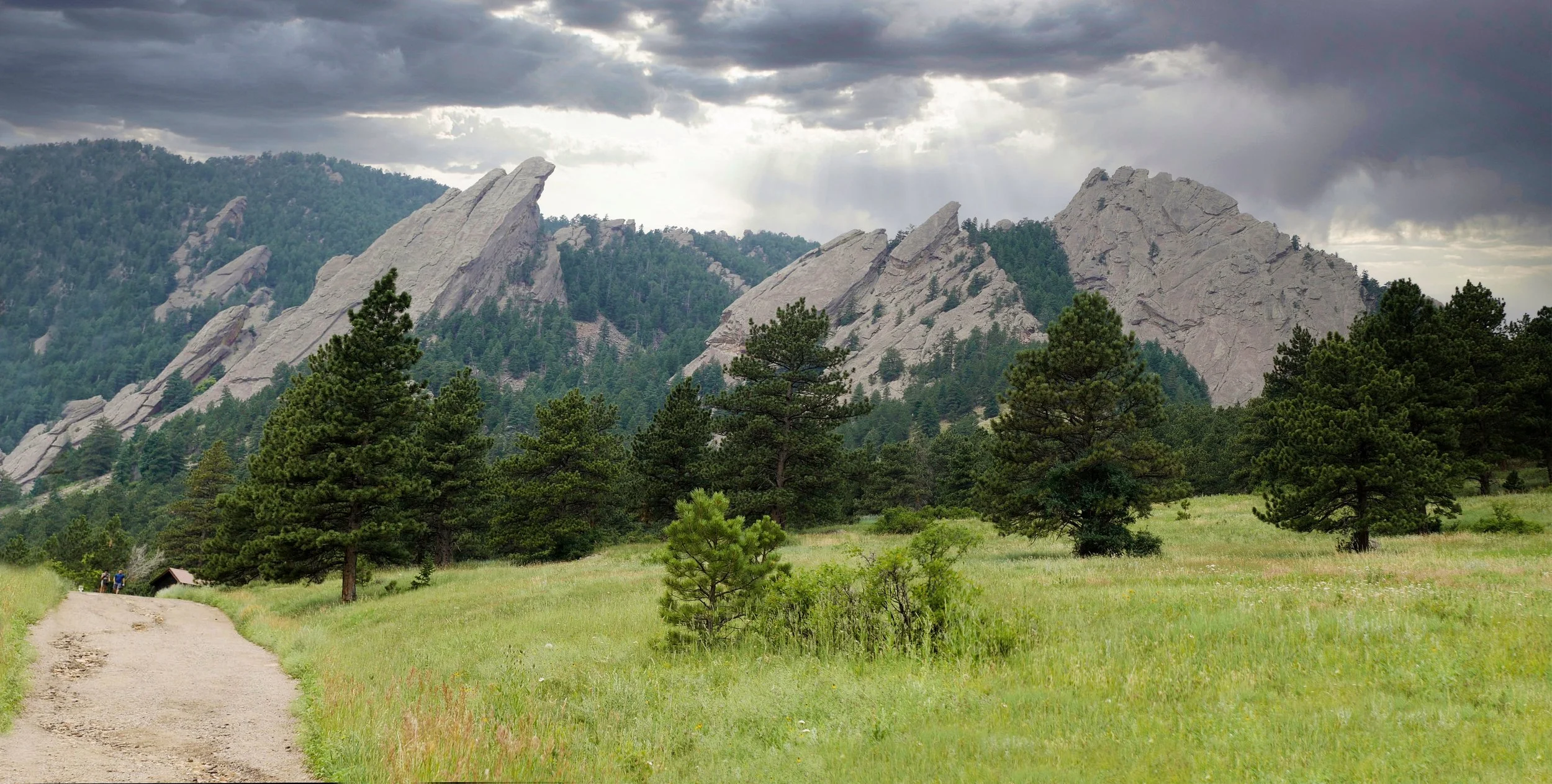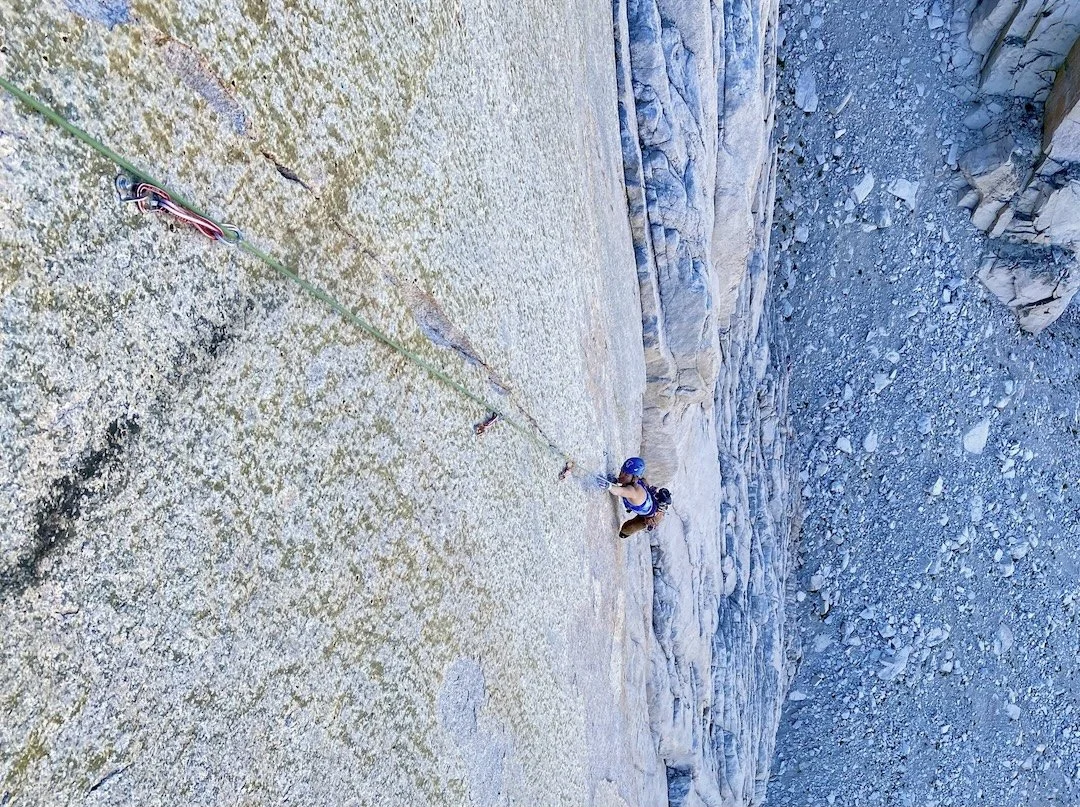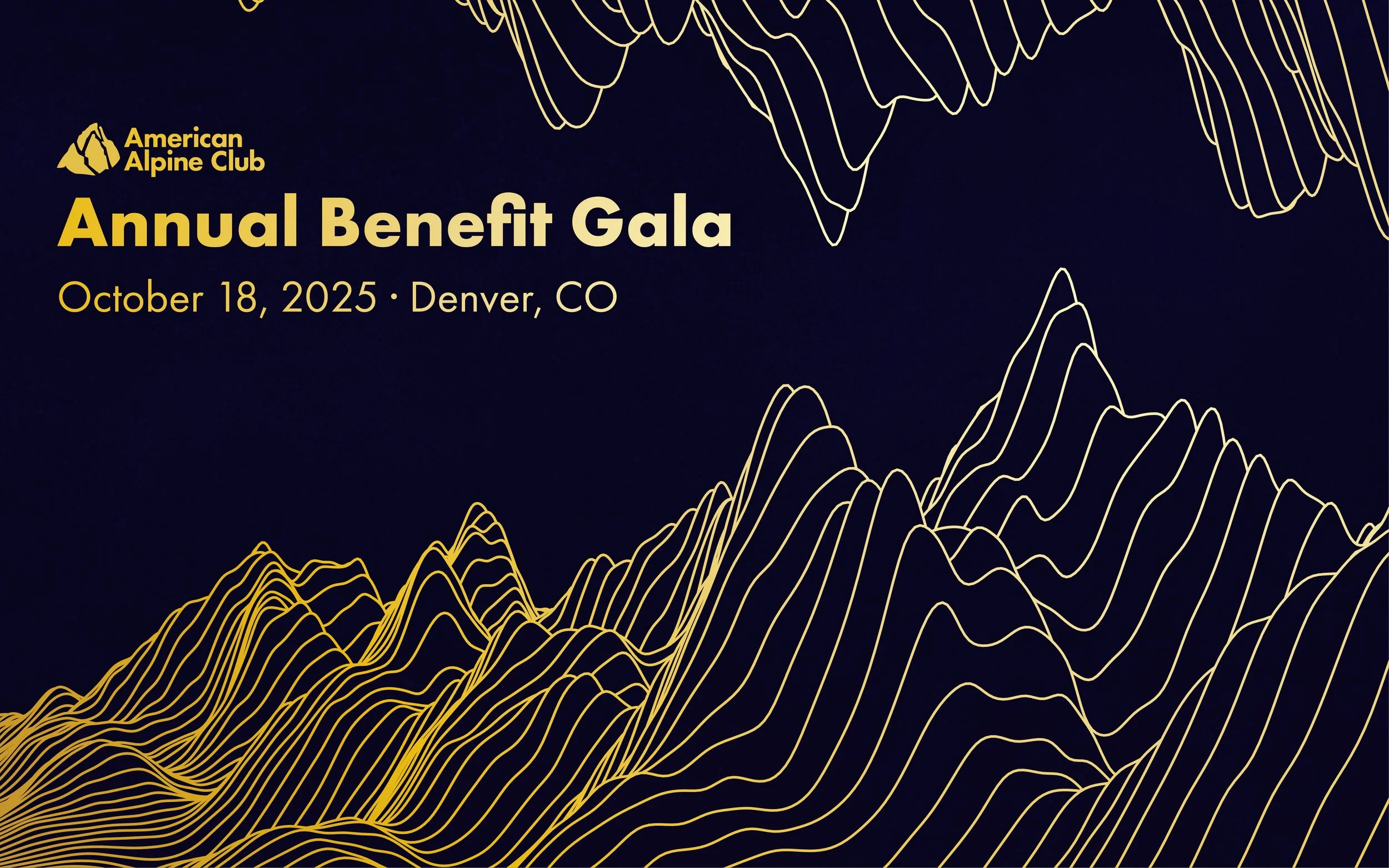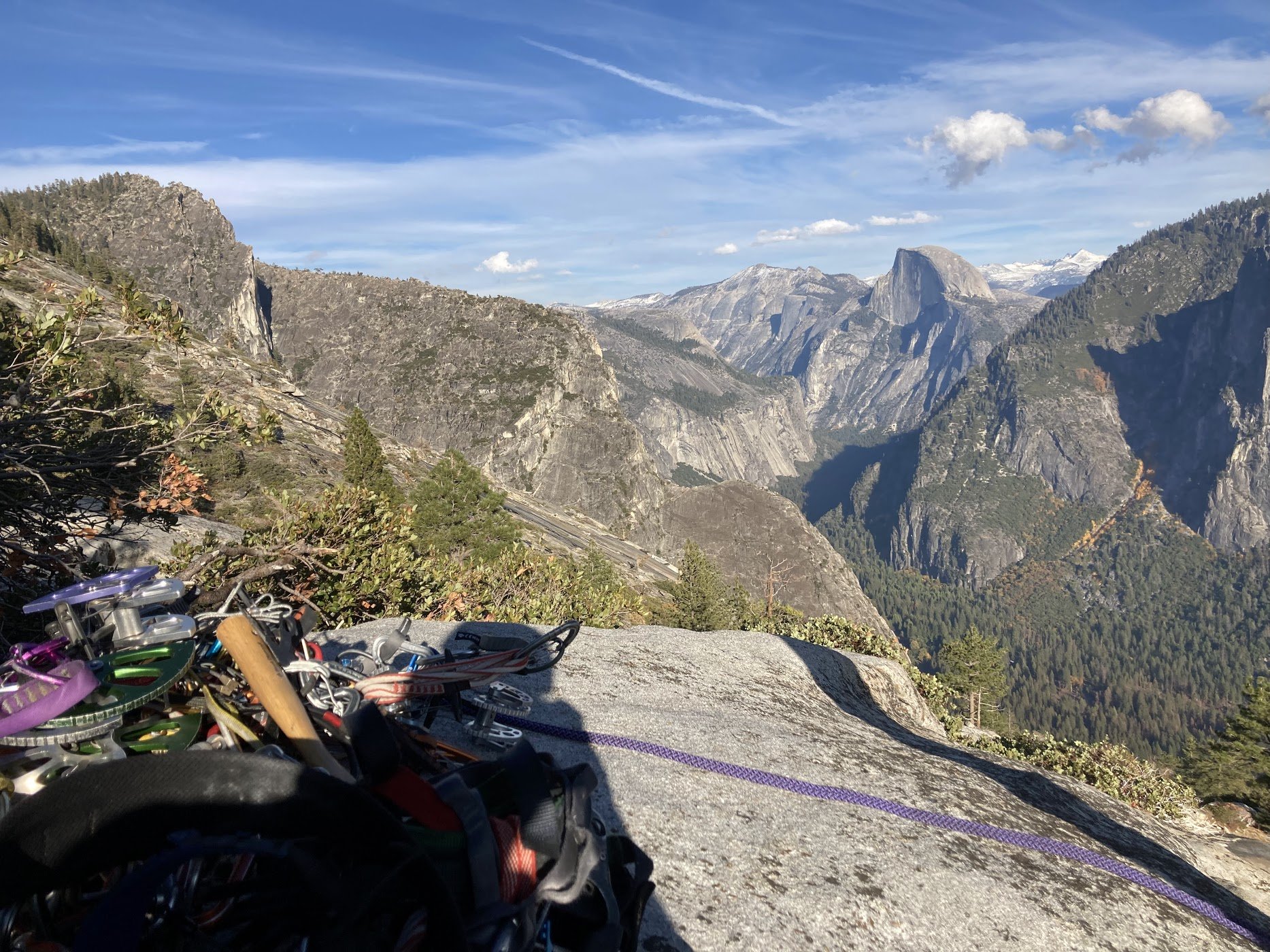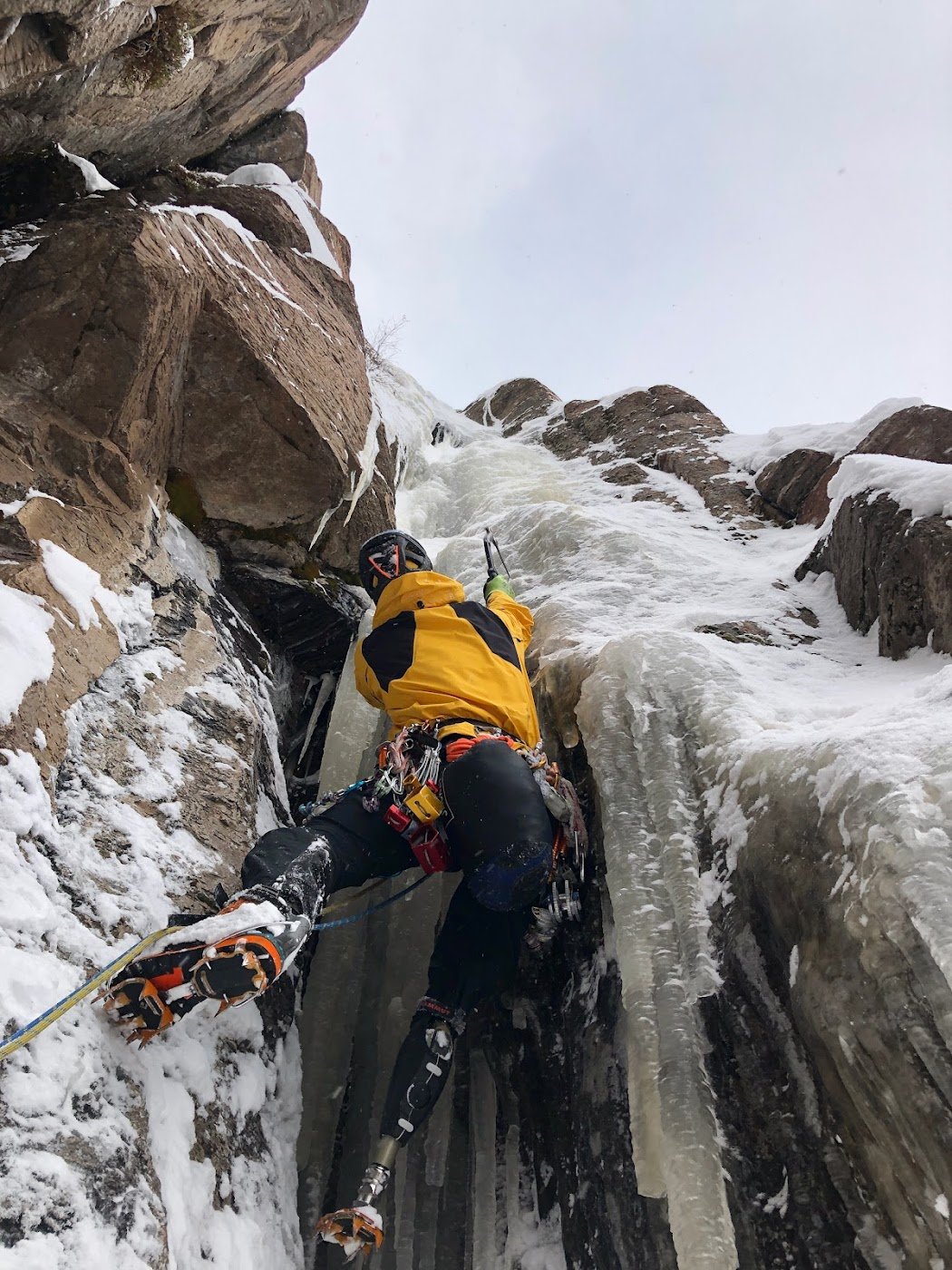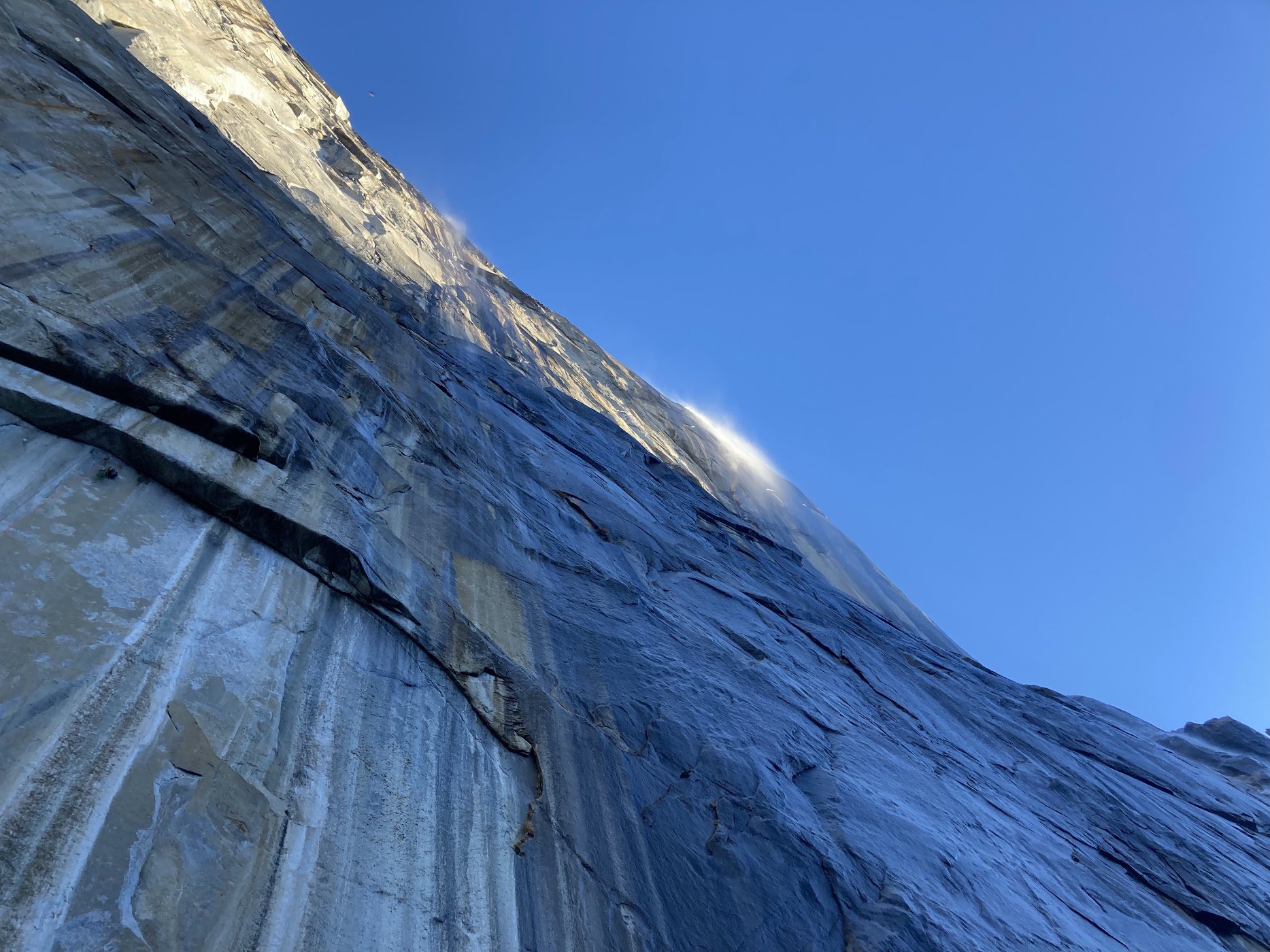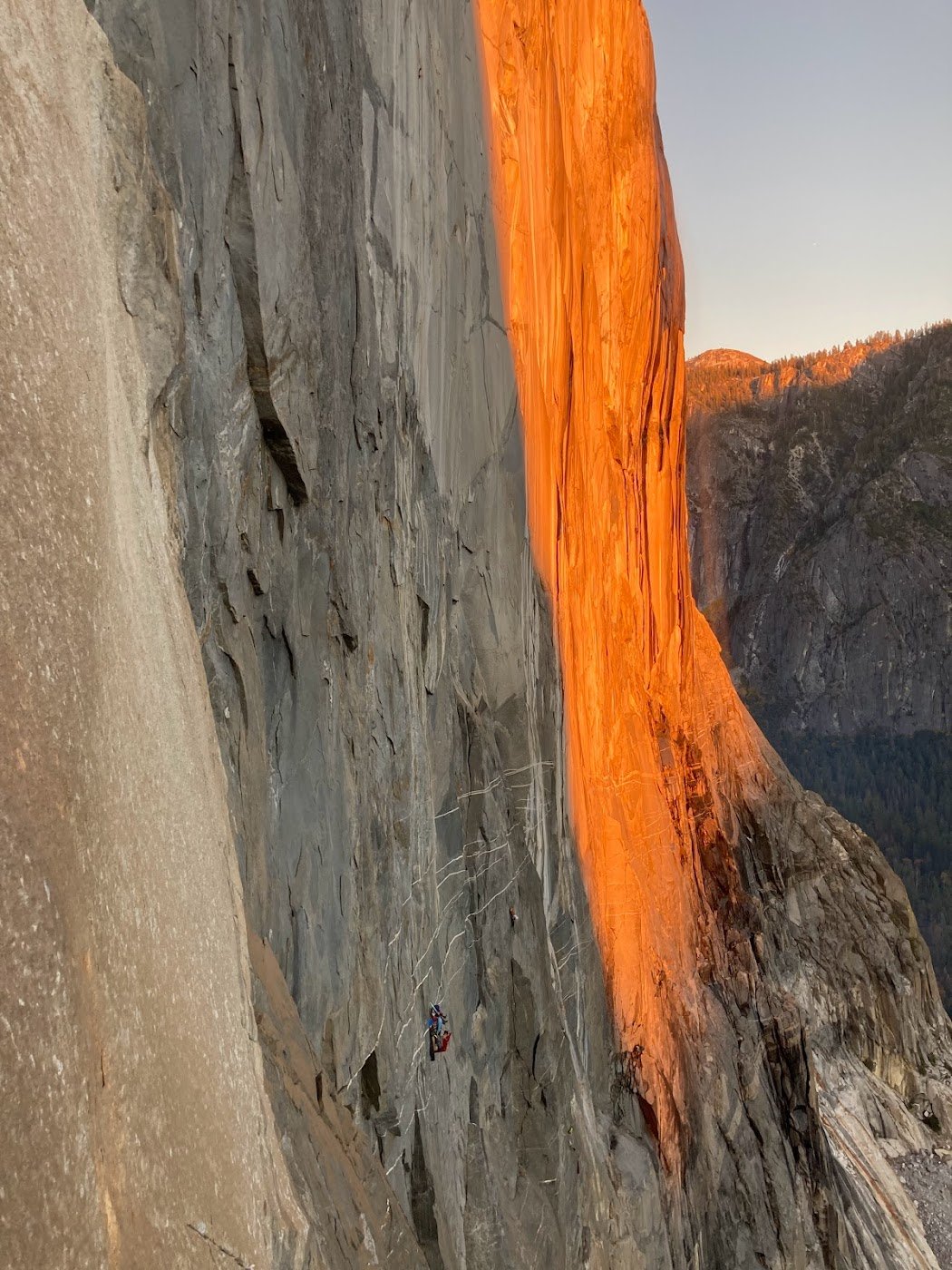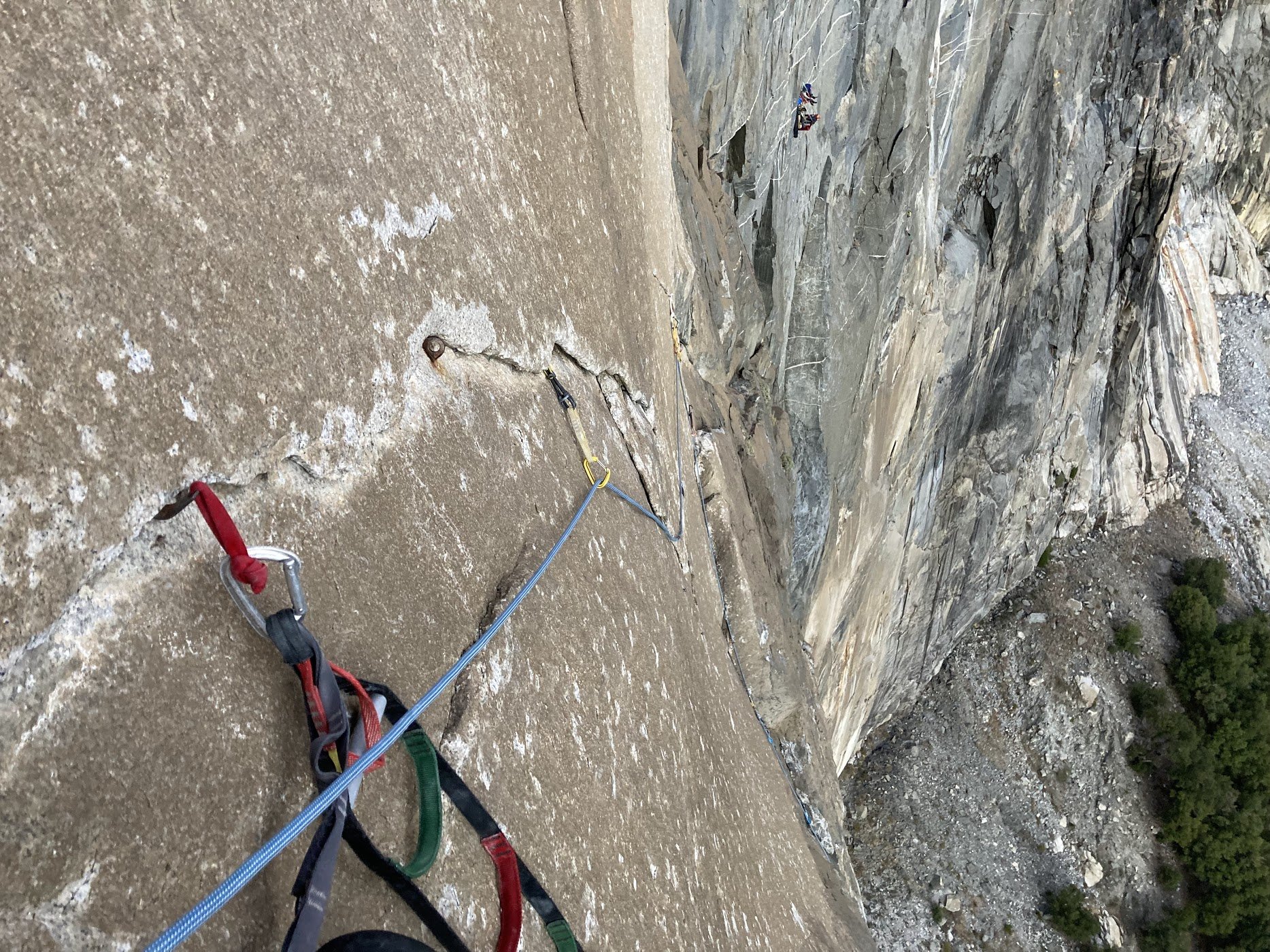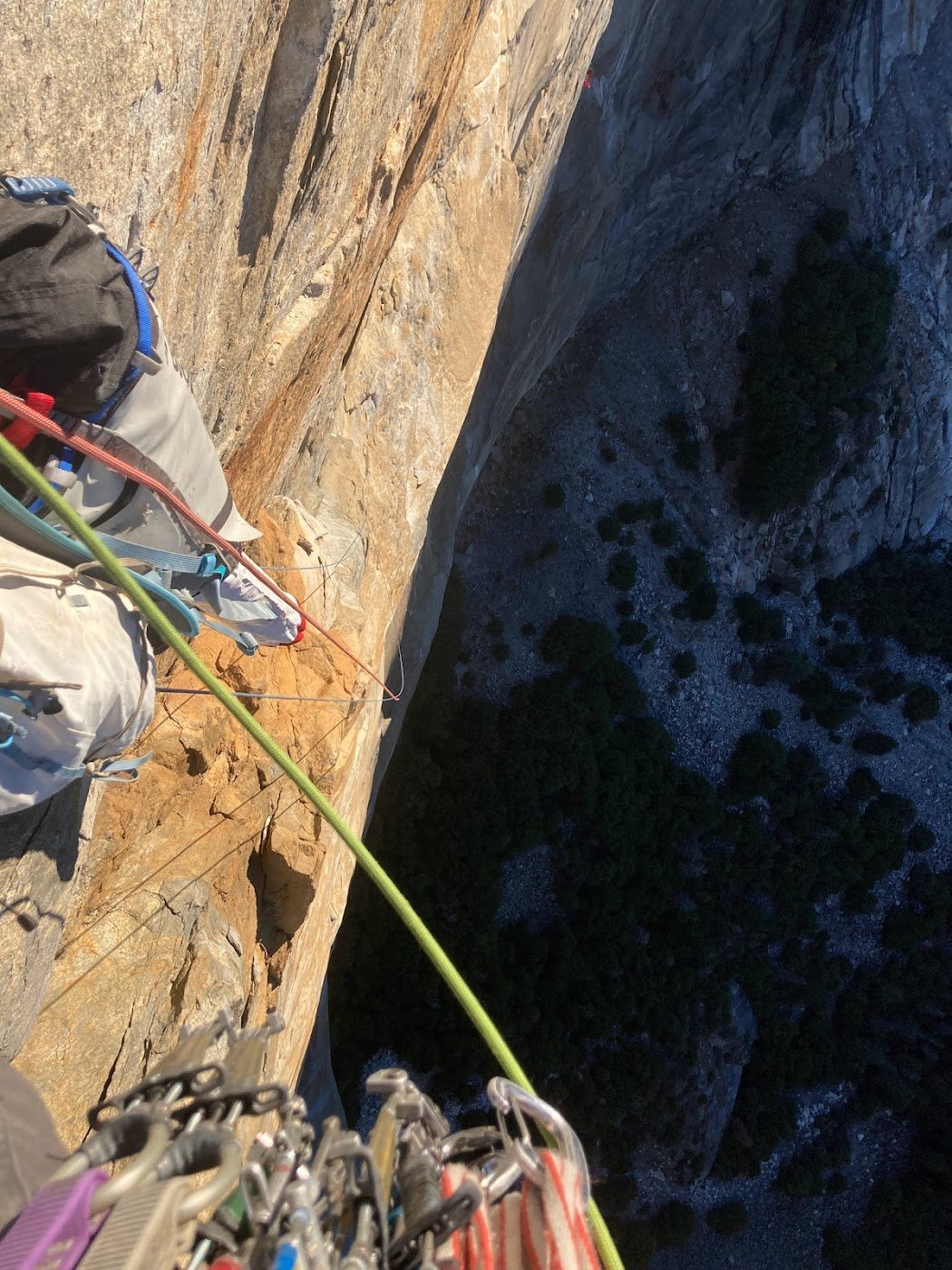Powered by the AAC’s Catalyst grant, Jessica Anaruk and Micah Tedeschi took on to the big walls of the Mendenhall Towers, seven granite towers that rise high above the surrounding Mendenhall Glacier in southeast Alaska.
Queer Mountaineers, Kulshan Climb: A Story From the Catalyst Grant
PC: Sarina Pizzala
Queer Mountaineers is a Pacific Northwest based non-profit that aims to provide community, events, resources, and a safe space for outdoor enthusiasts of all backgrounds, genders, and sexualities. Founders and directors Sarina Pizzala and Jude Glenn had a dream to put on one of the first all-queer climbs of Kulshan (Mount Baker) in the North Cascades.
Kulshan is known as a mountaineering training ground with a relatively straightforward and beginner-friendly approach. They met Jack Bynum at Indigo Alpine Guides, who shared the same passion for creating safe spaces for the LGBTQIA+(Lesiban, Gay, Bisexual, Transgender, Queer/Questioning, Intersex, Asexual) community. Together, the three of them planned a four-day course that would cover basic mountaineering skills with funding from The American Alpine Club Catalyst grant.
Join the Queer Mountaineers for a climb up beautiful Kulshan and read their story below!
Immaterial Climbing: A Story From the Catalyst Grant
Reported by Sierra McGivney
Photos by Ben Burch
Ben Burch climbing, featured in Immaterial Climbing. PC: Ashley Xu
In the backdrop of Northern Appalachia, Ben Burch (he/they) drove to nowhere. Like most high schoolers, driving was a source of relief and independence in the wake of an angsty breakup. Eventually, Burch needed to stop at a gas station, and the one they picked happened to be next to a climbing gym. Bored of driving aimlessly in their car, Burch wandered inside the climbing gym, opening the door to climbing and its community.
Burch continued cultivating their passion for climbing in Philadelphia when he went to college. There, he worked with other queer climbers to create PHLash, a community-based, peer-led group that aims to bring together LGBTQIA+ individuals to climb and socialize. Burch found he loved leading and being a part of that community. It was a space that held community and understanding in a sport that traditionally has not always provided that.
The mood shifted last year when West Virginia attempted to pass a law banning events based around queer affinity. West Virginia is only a stone's throw from Pennsylvania and hosts Homoclimbtastic, the world's largest queer-friendly climbing festival. Burch and his friends found themselves distressed about the status of Homoclimbtastic. This event, like PHLash, had enriched their climbing experience. It kept Burch climbing and invited others into the community. But now, they didn't know if it would ever exist again. Instinctively, Burch thought, I need to document this.
"I just needed to have something recorded down so people know that this event was here and that we were here," said Burch.
Their idea was to take photos from affinity groups and events they attended and post them on Instagram to exist somewhere in the ether. On a whim, Burch applied to the American Alpine Club's Catalyst Grant and was chosen. Their photos would no longer live just online but in a physical book: Immaterial Climbing: A Queer Climbing Photography Zine.
Burch embarked on an East Coast climbing adventure, photographing and memorializing queer events, meetups, and climbers.
Ultimately, the version of the bill that would outlaw Homoclimbtastic did not pass; however, the bill that did pass put restrictions on queer events. Minors are not allowed to be involved in any way in drag shows in West Virginia, and drag show organizers are responsible for checking the age of attendees. At the Homoclimbtastic Drag Show, participants had to wear a wristband and have their IDs checked.
Despite the political backdrop, the high-energy drag show and dance party at Homoclimbtastic was one of the most fun nights Burch had in years. For some photographers, when they capture moments through the pictures they take, their memories bend to how they remember them. That night, Burch took a photo of someone dancing surrounded by a bunch of people, all wearing wristbands, and titled it Armbands Around Salamander because the person dancing in the center has a salamander tattoo on their shoulder. This ended up becoming one of Burch's favorite photos in the book.
"They're really kind of lost in their moment of dance, and for me, even though it is kind of a reconstructed memory, I really think about that dance party as this moment of freedom and expression regardless of the circumstances that were trying to repress that," said Burch.
In the book, Burch focuses on his home base, too.
One moment stuck out to Burch. A participant at PHLash wearing a Brittney Spears t-shirt said that climbing in Pennsylvania is like Spears' song …Baby One More Time. The rock climbing in the northeast is generally not friendly. Outside of Philadelphia, one of the main climbing areas, Hayock, is home to Solid Triassic Diabase, a type of rock that requires precision on unforgiving edges. Philadelphia feels like a city that embeds grit and determination in its residents, much like the climbing in the area. The lyric hit me baby one more time embodies the rough climbing and the determination of the climbers in the area.
Photo by Ben Burch
Burch became interested in the idea that the city you're from—not just the culture–is reflected in the climber. In the book's PHLash section, he mixes photos from living in Philadelphia with climbing photos from the meetup.
Next, Burch changed their aperture, widened their depth of field, and traveled down to Atlanta, Georgia, to the southeast bouldering scene.
"[Bouldering in the southeast] is truly this perfect marriage of texture and shapes that force precise body positioning and control, mixed with the raw power to get through the fact that they're all just slopers disguising themselves as crimps," said Burch.
There, he participated in a meetup with the affinity group Unharnessed, an LGBT+ and allies climbing club. At this meetup, Burch was more of a wallflower; he had a couple of friends in the Atlanta area but was not a deep group member in the same way as Homoclimbtastic or PHLash. He listened in on the conversation between climbs and found it was not the idle talk that normally existed at the crag. People would talk about the climb or the person climbing, but then the conversation would shift to asking if anyone had extra food to put in the Atlanta community fridge or about the community resources near the gym. He was so struck by how focused the group was on building community through resources and knowledge.
It reminded him of a quote by bell hooks, "I think that part of what a culture of domination has done is raise that romantic relationship up as the single most important bond, when of course the single most important bond is that of community."
In their portrait section, Burch created a shallow depth of field, softening the background and pulling queer climbers to the forefront. Andrew Izzo is a crusher. He has recently sent Bro-Zone (5.14b) in the Gunks and Proper Soul (5.14a) in the New River Gorge and is a consistent double-digit boulderer based in Philadelphia. He only came out recently and is featured in Immaterial Climbing: A Queer Climbing Photography Zine. Burch thought that taking and publishing these photos of him almost served as a coming-out party. Izzo felt like there was no better way for him to come out. The intersection of being part of the queer community and part of the climbing community showed all of him. "That was a special moment in taking these photos, serving as a space for someone to embrace all of themselves," said Burch.
Everyone featured in the book's portrait section was chosen for their excellence in community work or climbing. Burch wanted to highlight these individuals who were balancing so many aspects of their identity and achieving so much within the climbing community.
The book revolves around the community Burch is most familiar with—that he could really speak to without fear of misrepresentation.
"I think all climbers are in constant chase of flow, of that feeling when you are climbing, and it feels like your body is in perfect response to what it needs to do with the rock—this immovable object that you have rehearsed and understood. For me, the East Coast Climbing Scene feels like that state of flow.
“It feels like a place where you are understood, and people know who you are, even without thinking about the larger circumstances. It's this, like, perfect moment of escape in the larger challenge of—to complete the metaphor—trying to finish the climb," said Burch.
More about Immaterial Climbing: A Queer Climbing Photography Zine and Ben Burch (he/they):
PC: Ben Burch
Burch is a photographer and climber currently based out of Washington DC. Part of queer affinity groups since they began climbing, he wanted to use this zine as a love letter to the spaces that gave him so much. For more of their photography, please follow them @benjammin_burch on Instagram.
Immaterial Climbing is a photography zine which explores the world of queer climbing. Taken over the course of 2023, this book explores meet-ups, affinity groups, and climbers who are creating their own space of belonging. The project features the event Homoclimbtastic, affinity groups Unharnessed and Phlash, as well as portraits of queer climbers. It is a lovely coffee table book, a book to add to your gym's collection, or a reminder that we'll always be here. Grab your copy.
This project was made possible through the American Alpine Club and the bravery of the queer climbing community.
Climbing out of the Comfort Zone: A Story from the Catalyst grant
Mika and Tyler descending PC: Jay Louie
Climbing is a way Jay Louie, Mika Kie Weissbuch, and Tyler Poston build strength, deal with difficulty, and rejuvenate. They climbed Castleton Tower via the North Chimney (5.9) in April 2022, thanks to the Catalyst Grant. Jay, Mika, and Tyler are members of the queer, trans, and persons of color community, with jobs in social justice fields that require significant emotional investment and labor.
"Climbing is all about community. Although you can climb on your own and grow from there, if you really want to progress, especially into more advanced climbing styles like trad, big wall, and alpine, you can't learn it alone," said Jay.
The three climbers with different skills and backgrounds came together to cultivate a safe space to pursue a desert tower climb. Dive into their story, told from three different perspectives below!
A Trip To Remember: A Story From the Catalyst Grant
Adapted from the 2021 trip report written by Adrien Costa.
The Catalyst Grant awards funds to individuals and teams who face barriers in accessing the climbing community and identify with an underrepresented group.
I free-wheeled down the tree-lined road, shaking out the legs that had just taken me up and over Tioga Pass from Lee Vining on yet another 5+ hour training ride. Up high, much higher than the tallest pines, loomed the world’s most famous granite wall. And up on El Cap, one could make out tiny dots stubbornly inching their way up, giving massive scale to the wall. At night, the dots turned into a constellation of stars, almost indistinguishable from the night sky. How I longed to be one of those dots, to feel the air and the wind below my feet, to see the trees in the meadow below as little crowns of broccoli, to have no concerns more pressing than scaling this cliff. But I had other things to do with my life. It was only 2014. My dream of becoming a professional road cyclist was turning closer to reality every day. All I had to do was keep pedaling. This improbable, half-insane climbing desire could find a resting place, for now, in the deepest corners of my brain.
Seven years later, I whipped my truck into the small pullout below the boulder and scree field leading up to El Cap’s shorter, but ridiculously steep, southeast face. The clock reads 4:46 AM. I step out and stand on one leg of bone and flesh, the other of metal and hydraulics. I am no longer a professional road cyclist. I no longer have two legs. Looking up at the dark outline of El Cap, I wonder whose life I am now living. I sure as hell never expected mine to look like this.
The universe has this rather bothersome tendency to remind us that the only constant is change, the only sure thing is that nothing is certain. I learned this the hard way. Us humans fight this, often subconsciously. We try to fight change by controlling everything we can, including our accomplishments and our material possessions. It can quickly become dangerously difficult to parse the imagined from the real, the tangible from the illusion.
I felt that I needed an adventure to shake myself out of the daze of daily life I found myself trapped in. I wanted to see if I could find a sliver of peace or wisdom up there. But I mostly just wanted to simplify my existence. It would be just me, my gear, and this rock. No illusions. Only, as I was about to find out, a whole lot of work.
Climbing a full-length, Grade VI route on El Capitan, by myself, was my big goal for the second half of my rock climbing season. I see and feel, on a daily basis, how much assumption goes on in the climbing world around ability and disability. I wanted to shatter this paradigm; to prove that, with the right support, anybody can accomplish anything they put their heart and soul into. I wanted this climb to be a call for much-needed inclusion and open-mindedness in our climbing community.
For me personally, this climb represented a big stepping-stone in my climbing, moving towards more committing, more involved multi-day objectives as I seek to continue developing myself as a versatile climber, comfortable in all media.
Zodiac, Adrien’s original plan, was too wet.
I finished shuttling my two loads to the base just as the sun was rising. My original plan was to climb Zodiac (C3), a 16-pitch route of moderate, clean aid that has frequently been referred to as a good introduction to “real aid” on El Cap. But a recent storm had soaked the first few pitches of the route, and I didn’t want to start a 4-day odyssey soaking wet. Luckily, I had a topo and gear for the nearby Tangerine Trip (5.9 C3+), which appeared steep enough to be completely dry. Between its consistent overhang, a huge traverse on the fifth pitch, and the fact that this route sees a bit less traffic than Zodiac, it was all starting to feel much more committing, and exciting, than my original plan.
I decided to start the trip via the first pitch of Lost in America, shown as “C3F Bad Fall” in the topo, which proved to be one of the cruxes of the route. I built my first anchor, cloved off a couple pieces low, and started up the pitch. My last piece of good protection was only 20 feet off the ground was well aware that blowing any piece on this first pitch could result in a ground fall. Very gingerly I inched my way up, breathing a huge sigh of relief upon regaining moderate terrain. I looked at my phone and realized that close to two hours had gone by. The next couple leads took some time as I got back in the rhythm of “real” aid climbing. I got my ropes fixed to the top of pitch 4, and having found a small ledge system below, decided to bivy there. It was a bit demoralizing to be just a couple hundred feet off the ground after a very long day of work, but I set my alarm for early and tried to enjoy the opportunity to rest.
The next morning, I broke down the portaledge, sipped my coffee, pooped in a homemade WAG bag, and jugged and hauled to my high point. Here, I finally joined Tangerine Trip proper for the committing 160-foot leftward traverse pitch. The lead was fine, albeit long, but rapping the lead line, and then cleaning the pitch, was as demanding as leading itself. The next couple pitches went well, but still slower than I would’ve liked.
I forced down some plain ramen for dinner, and was stoked to be able to hang my prosthetic leg with me inside my small portaledge’s fly to charge its battery for the night. This is something I have to keep tabs on during any overnight adventure, and is something I have paid the cost of being complacent with.
By the end of the following day, I was really starting to feel the stress simmering. A stuck tag line had cost me a lot of time and mental energy earlier in the day. I was also running out of water and knew I needed to top out the next day. But in order to do this, I’d need to fix one more pitch in the dark. The issue was that my headlamp was running out of juice, and my spare batteries were already dead. The stress and pressure was compounding. I had to act.
So I set off, keeping my headlamp as dim as possible, and hoping I wouldn’t get led astray. I tried to climb as efficiently as possible. It turns out that this pitch is also the route’s chossiest. It’s hard to believe there could be any loose rock up there, but I found it in spades as I quested upwards, always upwards, into the dark.
This was by far the mental crux of the climb. I felt so alone, so vulnerable, so close yet so far from the top, with very little margin for error. I cannot describe the relief that swept through my body once I could faintly make out the line of bolts of the anchor.
I tucked into my sleeping bag just before midnight, but was stoked on a good day of work, and confident that I’d be standing on top the next day.
I definitely had not anticipated the nonstop focus that I had to endure for four days straight. It wore me down, but by the last day I found a good rhythm, and started letting my body move on autopilot through the steps. Stack haul line. Stack tag line. Set up lead anchor. Select gear for pitch. Put on GriGri and Microtrax. Climb the pitch. Tag up anchor and haul kit. Fix lead and haul lines. Rap the pitch. Release the bags. Clean the anchor. Jug and clean the pitch. Haul. And repeat. And repeat. And repeat.
While free-climbing on the last couple pitches, I finally let myself have dreams of pizza. Touching the tree on top was surreal, and walking felt foreign, but more pressing at that moment were water, food, and figuring out how to get my 100+ lbs of gear, sprawled into various growing piles, off the mountain in one load.
What ensued was hell. With my haulbag on my back, a light backpack on my chest, a trekking pole in one hand and my portaledge in another, I stumbled and yardsaled my way down the East Ledges descent. I broke my prosthetic foot on the descent—under so much weight, the carbon fiber splintered from nothing more than a little trip. I could still walk (or hobble), but I could hear the fibers crackling with every step.
Four hours after leaving the tree on top, I walked in disbelief into the El Cap picnic area. The Trip was complete.
Looking back, I realize that aid soloing is a lot like pressing the fast-forward button on life. Every minute action, every decision you make has consequences that are felt, and must be dealt with, without delay. And these consequences range from a minor inconvenience, and time wasted, to time not really existing anymore for you. The constant low grade stress for days on end was exhausting, and yet there was no room for fear, nor any time to sit back. Only action could push my ropes further up the wall. Perhaps this is indeed an apt metaphor for life.
I have also come to realize that we have no option but to embrace change and make the most of the circumstances we are presented with. Life has taken me in directions I could never have envisioned as that fresh-faced boy riding his bike through the Valley. But by adapting and trusting the process, I was able to become, for a short little while, one of those tiny dots on that big, big wall.
A Note of Thanks:
To see the AAC come out with the Catalyst Grant, promoting inclusion and diversity in a sport which needs it so desperately, was incredibly meaningful and motivating. I deeply value what results when we invite more diverse folks into our community. When we do, we strengthen and deepen the human connections we share while recreating in the natural world we all love.
And I can honestly say that the folks at High-Fives Foundation are changing lives. Their work greatly decreases the barriers to adaptive athletes’ participation in our favorite outdoor sports. Having worked in the adaptive sports world, I cannot overstate the importance of the sense of agency, independence, and community that sport can bring an individual, and how these experiences can transform the course of someone’s life. Rock on!




